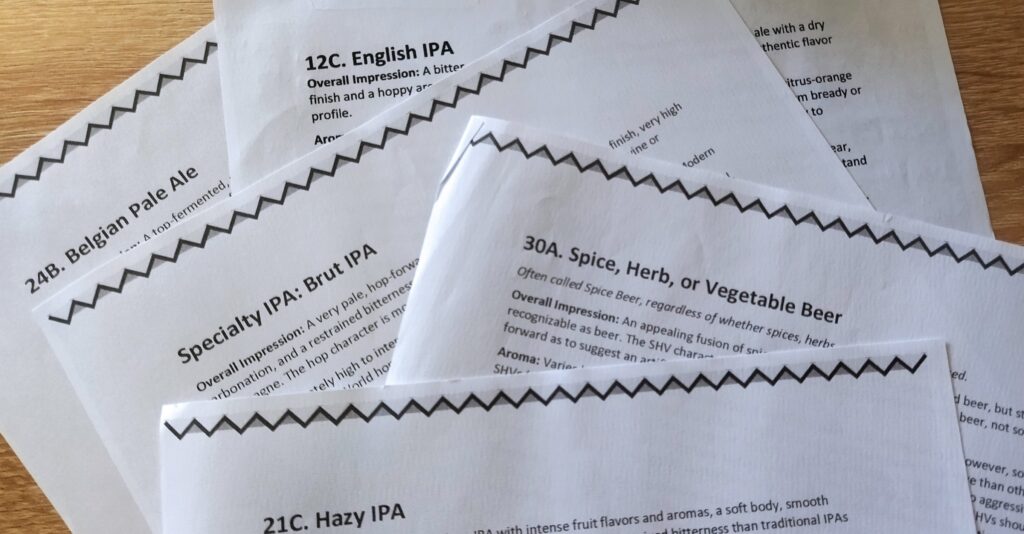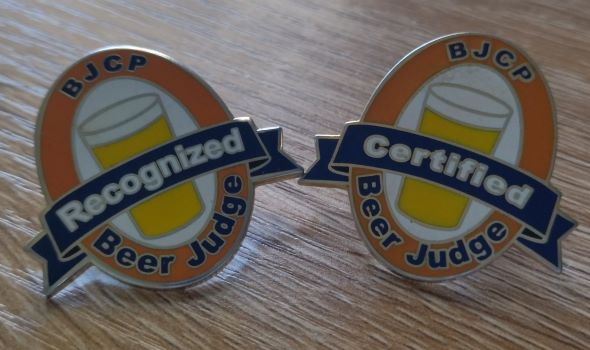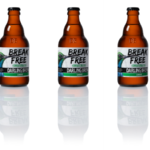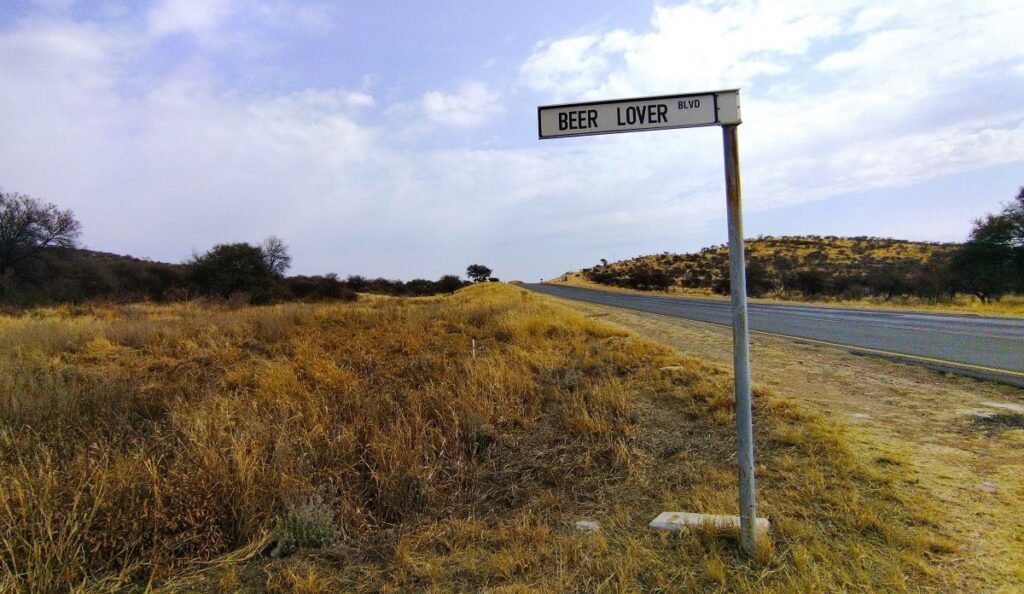As we’re still in January I thought you might still be looking for some kind of goal for 2024. So how about becoming a qualified beer judge? There are various methods and sets of guidelines used in beer competitions around the world, but in South Africa we almost exclusively use the BJCP (Beer Judge Certification Program) guidelines.
Founded in the States in 1985, the volunteer-run BJCP publishes guidelines for a vast range of beer styles (around 140 at last count). Originally written to help American homebrewers evaluate their beers in the days when they couldn’t get their hands on classic examples to taste them against, the guidelines are now used in both homebrew and pro competitions around the world. At last count there were more than 9000 registered judges in over 60 countries. And you could be next!
So why would you want to become a qualified beer judge? Well, first of all it really just sounds cool doesn’t it? People never cease to be amazed that there is such a thing and intrigued about how to become one. On a more practical level, it’s a great way to improve your palate, which helps you identify flavours both good and bad and in turn helps you brew better beer, if you’re a brewer. But you don’t have to be a brewer to gain benefit from judging beer – in fact the industry needs you. Homebrewers and pro brewers enter competitions for two reasons – bragging rights and feedback, and the more judges we have, the better the feedback gets, which helps to forge a stronger beer industry and better beer – and I think that’s an idea we can all get behind.
I must add at this point that judging is work – and save for some free lunches and maybe transport costs, it’s largely unpaid work. But it’s also a lot of fun, sitting around getting nerdy about beer with a bunch of like-minded beer lovers, getting to attend the awards events and, later on in your judging career, getting to travel around the world to judge in beer competitions.
Convinced? Want to know where to start? Here are 12 tips on prepping for the all-important tasting exam:

Getting to grips with the guidelines is one of the most important aspects of sitting the exam
1. Read the guidelines. A lot.
The BJCP separates beers into 34 main categories, largely along geographical lines. These categories are further divided into subcategories, each with an in-depth description detailing aroma, appearance, flavour, mouthfeel, overall impression, ingredients, history and a few classic style examples. When you eventually take the exam, you’ll be flying blind (closed book exam) so the single most important thing you can do while studying is familiarise yourself with the guidelines. You can find them online here, or better still, download the app, available for Apple and Android.
2. Taste alongside the guidelines
Actually, perhaps the single most important thing is tasting. Memorising guidelines only gets you so far if you can’t evaluate what’s in your glass. So every time you buy a beer, work out which style category it belongs to (Untappd can be a handy tool for this if the labelling of the beer lacks a little detail) and taste alongside the guidelines, trying to pick up the qualities described, or noting down if those qualities are absent. I’m not suggesting you do this for every single beer you taste, for you will probably soon find yourself without drinking buddies if you insist on analysing every sip when you’re enjoying post-work beers on a Friday afternoon. But if you’re at home with a mixed six-pack, or you find yourself imbibing alone in a bar with decent variety on tap, whip out your notepad – or print off a stack of scoresheets – and guidelines and get tasting.

Blind tasting at the 2023 African Beer Cup (image by Marla Burger)
3. Blind tasting
Once you’ve got to grips with the way the guidelines are laid out and the sort of characteristics you’re trying to pick up, ask a buddy to give you a blind beer tasting. Take notes on the aroma, appearance, flavour and mouthfeel then ask what the beer is. You can then check your tasting notes against the guidelines. There’s nothing more satisfying when you’re starting out than realising that your “floral hop flavour” or “medium copper colour” notes are word-for-word what’s in the guidelines. Once you’ve written notes and read the guidelines, this is a good time to start trying to assign scores to the beers. Each category has an allocated maximum score, with the total out of a possible 50 points.
4. Throw in some red herrings
When you eventually take the exam, at least one of the beers is likely to be presented to you as the wrong style. For example, you’ll be given an English Porter but you’ll be told it’s a British Brown Ale. You will always judge it to the style against which it was entered, but obviously a beer that’s out of style will not score as highly. (Consider for example, an American IPA that was presented as an English IPA. It could be a great beer, but the hop character would be out of style, causing it to be marked down). If you have a beer savvy household member, ask them to slip you the occasional out-of-style beer when you’re practicing for the exam. (Note that the red herring style should have a similarity to the actual style – they shouldn’t present you with a Helles and tell you it’s an imperial stout…)
5. Taste everything
And I don’t just mean beer. Taste your food and try to pick out which herbs and spices have been used. Sniff your fruit, nose the spices in your cupboards, inhale the different flowers in your garden, decide whether your mid-morning biscuits are more caramel-like or toffee-ish. If you’re looking for ways to liven up home life, grab a blindfold and get someone to feed you mystery foodstuffs. It’s amazing how much your palate is hindered when your vision is removed from the picture and it’s a great way to train your taste buds. Plus, you know, it’s fun.
6. Try some DIY beer taints
To do a real “off flavours” or taints session, you would need to sign up to a workshop or course, which are available only occasionally in South Africa. But there are a few things you can do to start recognising inappropriate flavours in beer. First, familiarise yourself with the BJCP off-flavours list and of course try to pick up any of those characteristics in commercially purchased beers. If the beer near you is all top notch, you can recreate some of the taints in your own home. Take a lager in a green or clear bottle and leave it in the sunlight for an hour or so, then chill and serve for a lesson in light-struck beer. A small splash of vinegar or lemon juice added to a bottle can demonstrate the flavour of acetic/sour beer, and for the brave, a splash of water from tinned sweetcorn should give you an idea of DMS. You could also contact your local homebrew club to ask if anyone has recently had any “whoops” batches and would like to donate a few bottles for the cause. You might even be able to assess them and let the brewer know what went wrong.

It’s a hand-written exam, so try to keep things legible, make sure you fill up all the space and be as specific as you can
7. Practice filling out the judging form
Although you’ll likely start with just hastily scrawled and often sparse notes, as you get better at tasting, it’s time to start filling out a BJCP scoresheet for each beer you taste. One of the things examiners look for is completeness, so try not to leave any plank space. You should aim to complete an evaluation in 10-12 minutes. Note that the sccoresheet used in the exam is very slightly different to the one used in actual competitions, so it’s a good idea to practice with the exam version.
8. Improve your beer tasting vocabulary
Once you’ve got the hang of tasting, the next step is to improve on how you describe what’s in your glass. Using terms like “malty”, “good head” and “crystal clear” are fine to start out with, but using specific, descriptive language is the key to getting a good score on the tasting exam. The BJCP website can be a little tricky to navigate, but there are good resources for those that persevere. One of the most useful is the examples of both terrible and excellent scoresheets.
9. Set up a tasting group
All this self-study is fine, but beer is a social beverage and the whole thing is definitely more fun with friends. Make a plan to cover a certain set of styles each week and maybe assign someone to give an overview of the brewing processes, history and characteristics of the style before serving you some blind tasters. Or bring along a couple of beers each, ask people to assess them and try to guess which styles they are.

Look how happy judging beer makes you!
10. Get some practice
Just like any discipline, there is no better way to prep for the exam than by actually doing it. Again, your local homebrewing club is a vital contact here, for they run a number of BJCP-sanctioned competitions throughout the year. Get in touch and ask them if you can sit with a panel as an apprentice at the next scheduled competition. You’ll get to assess the beers alongside experienced judges which gives you the chance to compare your scoresheet to theirs as well as exposing you to people with more experienced palates and a wider judging vocabulary.
11.Take the online test
Once you’ve got to grips with the tasting part, it’s time to register with the organisation. Before you can take the tasting exam, you need to pass a tricky 180-question test, covering all aspects of the guidelines, and requiring a certain level of brewing knowledge – resources like John Palmer’s How to Brew will serve you well here. The exam must be completed in an hour, but luckily it can be retaken once a day until you pass (it costs just USD10 to take the exam, or you can buy a ‘three attempts for the price of two deal if you’re worried about not passing first time) . Questions include multiple choice, true/false and the always challenging “check all that apply”. It’s an open book exam, but the wording of the questions and the strict time limit make it fairly challenging.
12. Sit the tasting exam

Once you pass, you get a pin to prove it, and can then start moving up the ranks of the BJCP
Finally, it is time for the tasting exam. These are usually organised by the local homebrewing clubs and require a minimum of six and a maximum of 12 examinees. You can also request your own exam, but you’ll need national rank judges to run it for you so it’s often easier to just register for a scheduled exam. Exam dates are usually several months in the future, affording you extra time to get to grips with the nuances of the guidelines and of your ever-improving palate. You can see the 2024 exam calendar here. Once your tasting exam day eventually arrives, you’ll get 90 minutes to evaluate six beers. You’ll be given the beer style and category number and will have 15 minutes to evaluate each beer, but no guidelines to assist you. And then, you wait. It can take up to a year for exam results to be posted, but in the meantime you can start accruing judging points to be added to your profile.
Once you pass and join the judging pool, you can gradually move up the ranks, apply to judge in pro-level competitions like Fools & Fans, the African Beer Cup and the SA National Beer Trophy, and further down the line join the marvellous global family of beer judges in competitions around the world. So if you haven’t downloaded the guidelines yet, what are you waiting for?!
The next judging exam in South Africa will take place in Cape Town on 19 May. For more information and to secure your spot, drop me a line.
A version of this article was first published on the BLEFA blog.










0 Comments